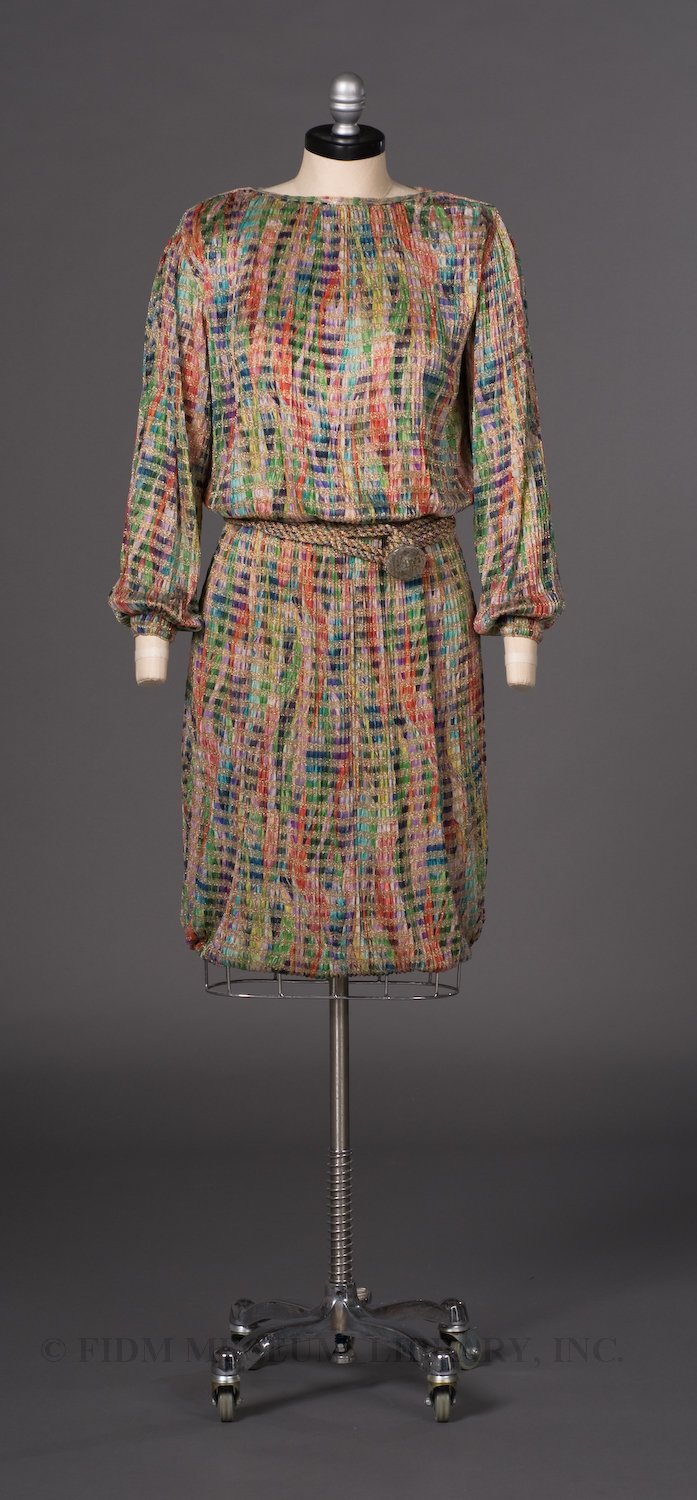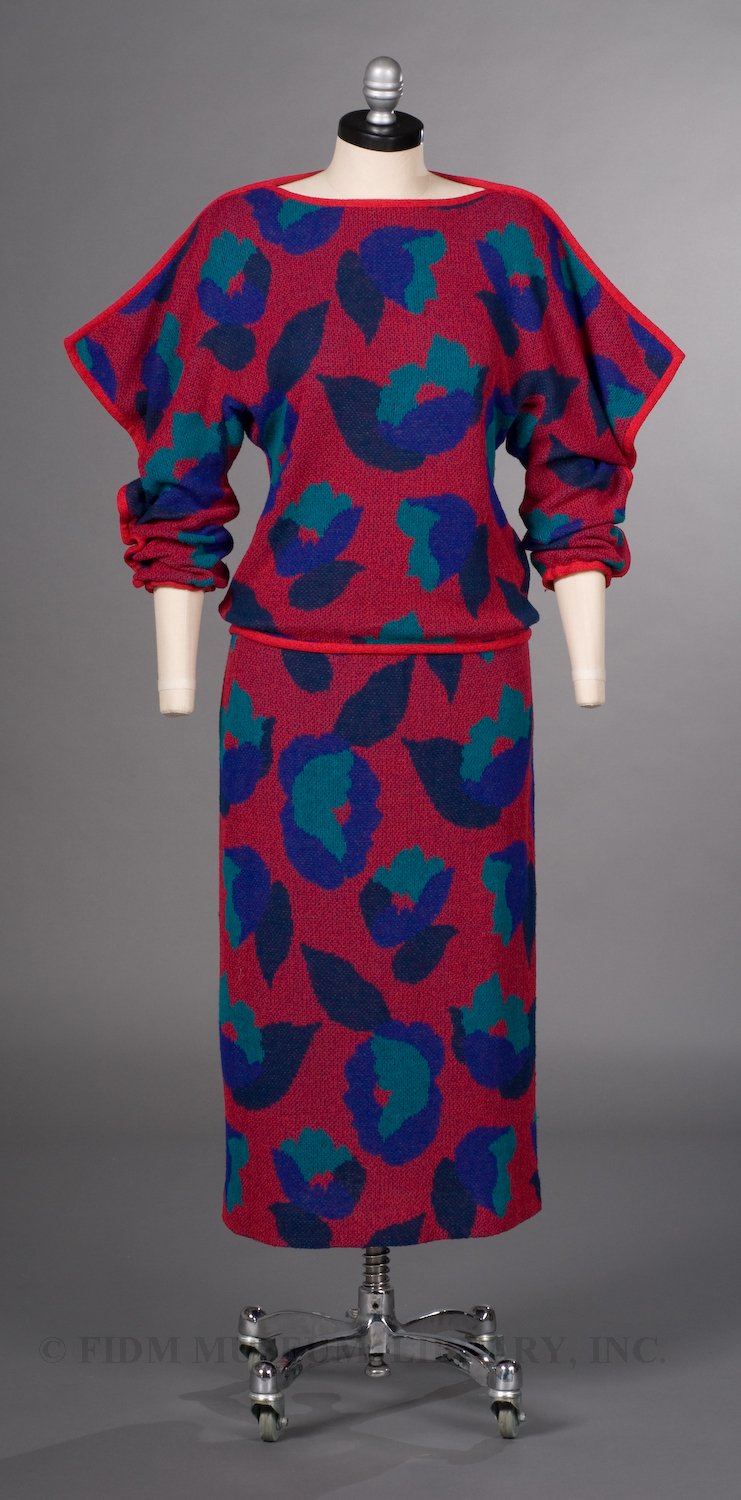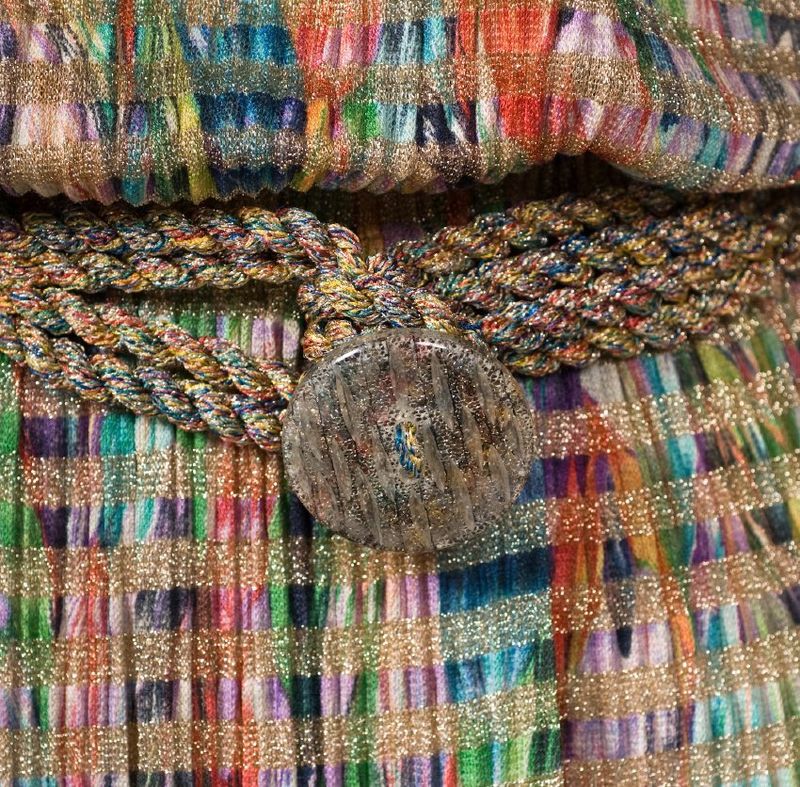Missoni
Founded by the husband and wife team of Ottavio and Rosita Missoni in the 1950s, Missoni established its reputation on lightweight knit separates. Like their compatriots Pucci, Missoni designs have an easily recognizable look; colorful, geometric patterns of zig-zags, waves or thin stripes are nearly synonymous with the label. Though geometric patterns give a Missoni print its form, an unhesitating use of color draws the eye and holds it in place. Though Missoni modifies garment types and silhouettes based on fashion trends, the overall shape of the garment is almost secondary to its pattern. Fashion historians and critics have suggested that these iconic patterns have a visual relationship with early 20th century art movements including the Bauhaus, Constructivism and the Italian Futurists. In general, these artistic movements produced boldly colored art based on abstracted or angular geometric forms, characteristics shared by many Missoni patterns.
 Missoni
Missoni
1987-1992
Gift of Patricia G. Waldron, M.D.
2002.149.1A
This crystal-pleated silk knit dress is woven with a horizontal band of gold. The painterly, multi-colored pattern is printed on the silk knit. This rainbow coloration is mirrored in the belt.
The Missoni emphasis on relaxed knit textiles was inspired by an early 20th century innovation: the incorporation of knits into high-fashion. Specifically, Rosita Missoni has acknowledged an appreciation for the work of Chanel, who used machine-knit jersey to craft chic and simple garments in the teens and twenties. In the same way that Chanel's knit garments became associated with the European jet-set of the early decades of the 20th century, by the late 1960s and 1970s, Missoni knitwear was associated with refined, yet casual, international chic. By 1979, Missoni was said to have "elevated knitted clothes to a form of art."1
In the early 1980s, knitwear became especially prominent in fashionable dress. Between 1981-85 dramatic sweaters fill the pages of Vogue magazine. Whether made from bulky, nubby yarn or bearing witty cartoon-like imagery, most sweaters and knitwear from this era are often oversized and worn as part of layered ensembles that demphasize the body. Vogue declared 1983 "a very strong year for knitting across the board--knitting that has a new strength of character, a new level of design."2 In this same issue Vogue emphasized the adaptability of sweater dressing, noting that "you can be totally turned out in a sweater and pants" in a business or formal situation.3 This Missoni 2-piece sweater ensemble dates from this period.
 Missoni
Missoni
1982-85
Gift of Patricia G. Waldron, M.D.
2002.149.7AB
Very different from the dense patterning of Missoni's classic geometric patterns, this straightforward floral pattern is attuned to the pop aesthetic seen in some 1980s fashions. The exaggerated sleeves, emphasized with red piping, are almost cartoon-like. The jewel tones pop too, reinforcing the over-the-top silhouette. Our Patrick Kelly knit mini-dress shares this same playful, almost theatrical, sensibility.
1 Morris, Bernadine. "Missonis' Clothes a Hit as Milan Showings Open" New York Times 26 March 1979: C16.
2 "View" Vogue Sept. 1983: 591.
3 "Sweater Dressing" Vogue Sept. 1983: 704.
